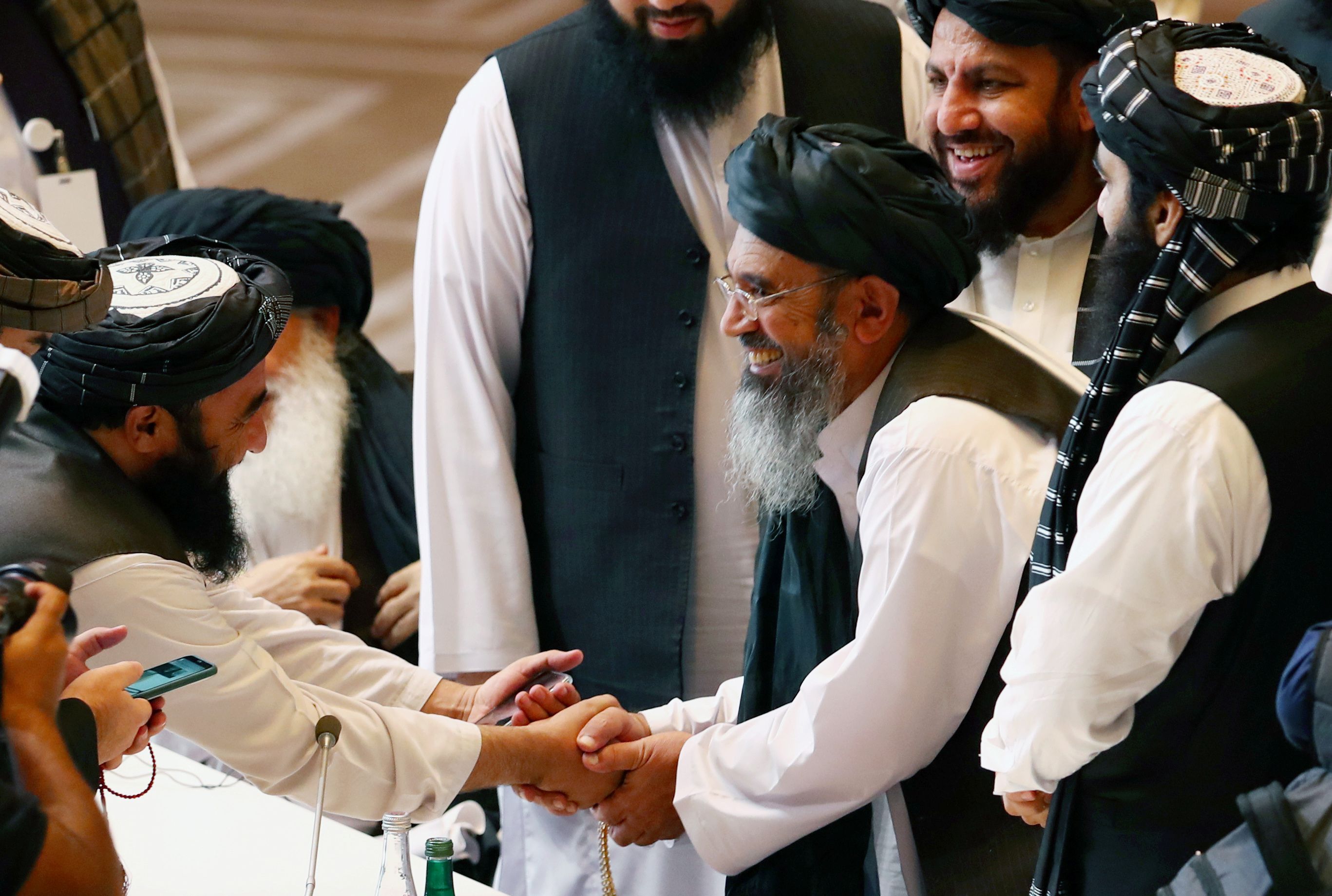Intra-Afghan Negotiations: Peace at the Cost of Democracy?

Attempts at intra-Afghan peace talks, undertaken by the U.S. since 2010, led to the start of historic negotiations in Doha on 12 September. For the first time, the Taliban agreed to direct talks with the government of Afghanistan, which they still do not formally recognise. This became possible as a result of a deal between the U.S. and the Taliban on 29 February this year. Although the agreement foresaw the start of the peace process on 10 March, this was postponed due to the dispute over the release of 5,000 Taliban from Afghan prisons in exchange for the release of 1,000 members of the Afghan National Security Forces (ANSF), a deal agreed by the U.S. but without the consent of the authorities in Kabul. Negotiations became possible only at last moment, after the government of President Ashraf Ghani, under pressure from the U.S. and with the approval of tribal leaders (Loya Jirga), released the last prisoners. However, the first meetings of the negotiating teams revealed divergences on the framework and agenda of the negotiations. The modest progress made in Qatar thus far has been accompanied by the Taliban’s new offensive and the intensification of the fight with government forces in Afghanistan.
The Main Contentious Issues
The aim of the negotiations is to end the civil war. Among the many difficult topics are the reintegration of the Taliban in the armed forces, accountability for war crimes, the observance of human rights, including those of women and ethnic minorities, and the choice of school of jurisprudence and economic governance. However, two issues are the most challenging and most important. These are the ceasefire and the shape of the future political system.
The government demands an end to fighting before other issues can be settled. The Taliban, however, prioritise agreement on the future form of the government and the principles of the power-sharing deal. According to government officials, no concessions can be made in relation to changes to the current system. The Taliban have not yet presented their comprehensive vision for a new system, and the statements of individual leaders are unclear and often contradictory. They oscillate between the restoration of the pre-2001 Islamic Emirate of Afghanistan and a more moderate version of the system, based on Sharia law, but with greater emphasis on the rights and freedoms of citizens.
The Waning Position of the Afghan Authorities
The government in Kabul controls most of the country’s territory (including all provincial capitals), inhabited by the vast majority of residents. It also has a better equipped, trained and more numerous security force (106,000 police officers and 182,000 soldiers) than the Taliban. It gathered a representative and inclusive delegation for talks. The 21‑person negotiating team (including four women) embraces all major ethnic groups, political factions, social organisations and former warlords. However, its position in the negotiations is weakening.
First, the agreement between the U.S. and the Taliban deprived the authorities of their main bargaining chip in the negotiations, i.e. the withdrawal of foreign troops in return for a truce. The U.S. has already reduced its forces from 13,600 soldiers in February to 8,600 in June and 4,500 in November. Although President Donald Trump announced the return of all soldiers by the end of this year during the U.S. election campaign, his administration confirmed only a reduction to 2,500 personnel by January 2021. All international forces (including the NATO mission) are to leave the country by May 2021. Secondly, the cessation of attacks against the Taliban by U.S. troops limits the ANSF’s military capabilities (for example, depriving them of air support), forcing them to focus on defensive actions. Additionally, it weakens the morale of the soldiers, increasing the desertion rate.
Third, the government is weakened by internal political disputes. It was only in May, under pressure from the United States, that it became possible to end the fierce conflict between the main competitors in the presidential election of October 2019. Abdullah Abdullah recognised the election of Ashraf Ghani as president, and he became the Chairman of the High Council for National Reconciliation, which is the main institution responsible for the peace agreement. Disputes between them, including around the role in the negotiations, persist. The situation is further complicated by tensions with other political leaders. Maintaining unity in the government camp will be a constant challenge, and some politicians may seek unilateral agreements with the Taliban. In addition, the government’s position is worsened by the negative economic consequences of the COVID-19 pandemic, with the official number of infections from the disease standing at 42,000 by 08 November October).
The Taliban’s Negotiating Advantage
Unlike the government, the Taliban seem to be more united. Their delegation includes senior leaders of the Leadership Council (headed by the current chief justice of the Taliban and a close associate of Taliban leader Hibatullah), governors, military commanders, and five former Guantanamo detainees. Their position is strengthened by a favourable agreement with the U.S. and growing military strength
After signing the agreement with the United States, the Taliban stopped attacks on NATO troops and directed their actions at government forces. Experienced fighters (5,000) released under the deal strengthened the military capabilities of the Taliban. According to the Afghan authorities, 3,500 members of the ANSF died between February and July alone. The UN indicates that, by 30 September, about 6,000 civilians had also suffered in the fighting, including over 2,000 dead. Although these are the lowest figures since 2012, and 30% down on the corresponding period in 2019, the majority of the victims (45%) are the result of Taliban actions. Continuing the fighting and maintaining pressure on government forces is their main negotiating tactic. Therefore, they ignore calls for a ceasefire, making agreement dependent on political concessions.
The Taliban know that time is in their favour. They may drag negotiations out for months or years, gradually expanding control over the country. Waiting for the full withdrawal of foreign troops, they strengthen their rule in areas under their control, building up their army and administration. They are also seeking greater international recognition by establishing contacts with other countries in the region, such as Iran and China.
Conclusions and Prospects
There is agreement among the parties involved in the conflict (such as the authorities in Kabul, the United States and the EU) that this war cannot be won on the battlefield, and that a political agreement is the only chance to bring peace. However, in the present circumstances, this will depend primarily on the Taliban, who are convinced of an imminent victory. They are probably now counting on taking full power and imposing their own system, marginalising the current government and ethnic minorities. This would lead to an end of negotiations after the withdrawal of foreign troops, and the outbreak of a new phase of the civil war similar to that of the 1990s. However, it is still possible that the Taliban will agree to make concessions and agree to an inclusive political system, based on local Islamic traditions and laws but also taking into account the interests of the main political and ethnic forces and guaranteeing the basic gains of the last 20 years (for example, political and economic freedoms). In both cases, however, it will mean the end of the experiment with building democracy in this country.
Western partners (including the U.S. and European countries), tired of almost 20 years of intervention, seem ready to accept a greater Taliban role in government, along with systemic changes, but not at the expense of reducing security guarantees and undermining basic human rights. It is possible that U.S. President-elect Joe Biden will revise the strategy of the previous administration and leave small U.S. forces in Afghanistan to put pressure on the Taliban. However, the West’s main instrument of influence during the negotiations will be conditional political recognition and economic support. An opportunity to present such an offer will be the international donors’ conference on Afghanistan in Geneva (23-24 November). EU and NATO countries that want to withdraw their contingents (for example, Poland still has about 300 soldiers there) and leave a stable Afghanistan, may use the promises of further economic aid as an incentive for the Taliban to make concessions. While reaffirming support for the current government in Kabul, the continuation of assistance to a future government involving the Taliban should be conditional on the adoption of a peace agreement that is acceptable to the main political forces and guarantees fundamental human rights.


